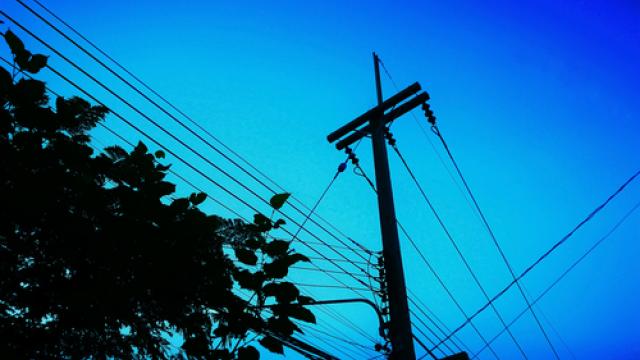Trees add beauty to any landscape, but they have some impressive practical benefits as well. They clean the air, reduce carbon dioxide and (when positioned correctly) provide protection from wind and sun, reducing heating and cooling costs. If a tree grows too close to a power line, however, it can cause power outages and become a life-threatening danger.
A growing problem
Trees can be a contributing factor to as many as 50% of power outages. Problems can occur suddenly, such as when a branch breaks during a wind or ice storm. Issues can also develop over time through natural growth patterns, with growing branches crowding or rubbing against power lines.
Trees located near power lines represent a real threat to children who may be tempted to climb them, or to homeowners attempting to tackle a tree-trimming job on their own. Limbs and branches that come into contact with power lines may themselves become energized.
Trimming back
To improve safety and reduce the risk of power outages, LADWP prunes trees to clear our power system from vegetation interference at no cost to you. The amount of trimming that takes place depends on the conductor voltage, construction, tree location, species and rate of growth. Our pruning standards’ emphasis is to utilize drop-crotch cuts, natural target pruning, and directional pruning. Directional pruning guides new growth away from power lines. Limbs or portions of limbs growing near power lines are trimmed back to the main branch or trunk just outside the branch bark collar, or the area where a tree’s branch meets the trunk. This preserves the natural defense system of the tree and minimizes impact on the crown.
The California Public Utility Commission requires a minimum of 18 inches of clearance between trees and high-voltage power lines at all times. The minimum clearance is 4 feet in high fire areas. Do not try to trim trees around high voltage power lines or move downed power lines yourself. If you see a tree you think is interfering with high voltage conductors or a power line that is down, it is important that you notify the LADWP so we can do any necessary trimming or repairs. For tree trimming services near power lines call LADWP Customer Service at 1-800-DIAL DWP (1-800-342-5397).
Right place, right tree
Adding trees to your landscape? Carefully consider different tree species and how they may affect power lines on your grounds. No tree should be planted near high-voltage transmission lines. Some species, however, normally grow to a mature height of 20 feet or less. These include:
- Crabapple
- Flowering Dogwood
- Hawthorne
- Bristlecone Pine
- Common Juniper
- Trident, Amur, Paperback and Tartarian Maples
- Rose Acacia
These species can typically provide an attractive addition to your landscape without interfering with distribution lines. The following species, however, grow particularly tall and should be planted no closer than 60 feet from distribution lines:
- Oak
- Ash
- Eucalyptus
- Sycamore
- Jacaranda
- Most pine species
- Most palm tree species
If you're planning a landscape project, overhead power lines are not your only concern. Knowing where utility lines are buried can help you avoid injury, service outages and costly repairs. Before you dig call 811 or go to digalert.org to have underground lines marked before you dig.
September 2023 Empowering Small Business
LADWP's monthly Empowering Small Business Newsletter helps inform industry-specific small business customers about LADWP news, conservation programs and ways to save on their bill.
Full Newsletter